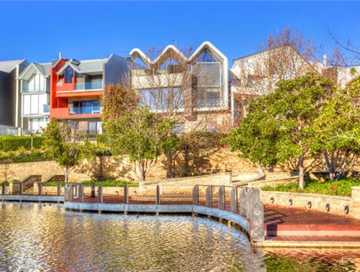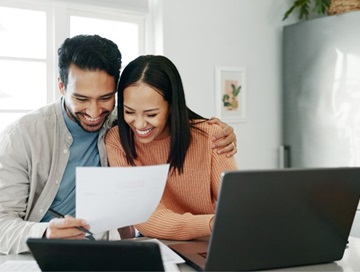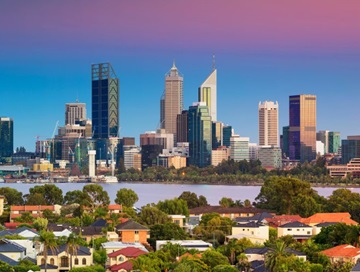Sifting through the library of online resources and information about “green homes” and reducing your carbon footprint can be confusing. However, making positive steps to live a greener lifestyle is not only beneficial for our environment, but certain aspects can also benefit you when it comes to selling or renting your home.
So where do you start?
We spoke to Chiara Pacifici, founder and partner of Green Gurus,, to get an expert’s advice on where to begin and how to make your home environmentally friendly.
What do you think is the biggest misconception when it comes to making a home more sustainable and green?
The perception buyers and tenants don’t value these benefits at point of sale or lease.
In fact, more and more people in Western Australia are recognising that well designed, high tech, smarter homes are more affordable, comfortable and healthier to live in. Such benefits have become part of the top five considerations when buying or investing in Perth. This is especially significant given the current buyers’ market and the excess of similarly priced properties to choose from.
It’s important to note the level of interest in sustainability features and smart technologies has increased in the last 10 years thanks in part to the rise of electricity tariffs. Another telling sign of demand for sustainability features is the number of rooftop solar PV systems throughout the state - with one in four households now enjoying clean, green affordable energy.
What are the most common mistakes people can make when it comes to their home and being environmentally friendly?
That ‘greening’ (improving the efficiency) of your home is expensive or difficult to achieve. It isn’t.
For the majority of existing homes, the lowest hanging fruit often provides the most significant returns in terms of comfort and cost savings. Start simple and get active, especially as we move into summer.
Making simple adjustments to your home and how you live in it can seriously improve the thermal comfort for you and your family, reducing the need for air-conditioning; the biggest energy guzzler for most homes.
Protect your home from direct heat gain and reduce energy wastage through the following:
- Seal up the cracks to draft proof your home.
- Open windows to let the cool air flow.
- Place a timer on your hot water system, spa or pool to reduce wasted energy.
- Invest in a pool cover to reduce water evaporation and heat loss (should your pool be heated).
New homes or renovations can incorporate the smartest design features on offer. It’s important to note, quality is not only recognised by shiny finishes or granite bench tops, but by the comfort level within the home. More and more people are valuing this factor of comfort over other traditional desires.
Simple passive design features such as the orientation of main living areas and openings to promote the flow of fresh air should be the norm. Bolt on infrastructure and technology such as solar PV power generation and battery storage will greatly reduce your electric bills, but should be the second step towards achieving savings.
Smart design and the latest tech can save hundreds and over time, thousands of dollars. For all these reasons, ‘green’ features are also a very important point of difference when selling or leasing.
What are two easy things people can do to start reducing their carbon footprint at home?
Environmentally friendly homes have low to zero environmental or carbon footprints. Ideally we would be generating enough electricity to power our homes, store it, share it or use it to power our electric vehicles. Energy is a focus for much of Australia’s efforts to improve efficiencies, reduce waste and transform our economy into a clean energy future. Yet two other important areas you can tackle at home include:
1. Household waste
Although not the most talked about, our household waste is a real and present concern. So much can be done with our waste other than leaving it in landfill (taking 100-1000 years to breakdown). We now have technology that can transform organic waste into energy to power our homes, plastic bottles into 3D printed items and glass into road base.
Start small. Get in touch with your local Council for a list of options available to you. Start by avoiding or re-using your ‘stuff’ altogether. Try it for a week and see how it works.
2. Food production
Why not consider transforming your backyard or balcony into a food producing area? Plenty of Perth families are involved in planting veggies, herbs and cultivating chickens at home. Councils allow it, so why not you?
We also hear stories of neighbours sharing the fruits of their labour as a great way to connect; both with the environment and in making new friends!
What feature is the most budget friendly? Can they help to cut household costs?
As mentioned, you can take simple ‘physical’ actions at no cost that will accumulate to huge differences both in comfort (liveability) and household costs.
However, although an upfront investment is required today, rooftop Solar PV with battery storage technology is one of the fastest and most effective energy saving options. With pay back periods for roof top solar PV of less than three years, this option offers an affordable energy alternative that empowers people to take charge of their bills. Coupled with battery storage technology, ‘renewable smart energy’ will become a standard necessity for our homes by 2030, rather than the unique point of difference it is today.
Many people with electric vehicles are also saving big as they ‘plug-in and drive away’ through clean fuel generated by the sun at home.
If you have any further questions on this topic, visit the Green Gurus website or speak to a local agent on how to best incorporate these tips to help sell or rent your home.
.tmb-imgwidgetm.jpg?sfvrsn=f14e3b7b_1)
.tmb-rcarousel.jpg?sfvrsn=b4b9111_1)




.tmb-rcarousel.jpg?sfvrsn=d38b03f0_1)



.tmb-rcarousel.png?sfvrsn=b7e87578_1)